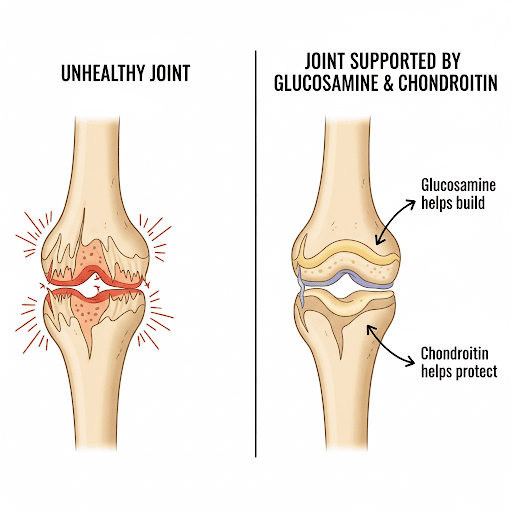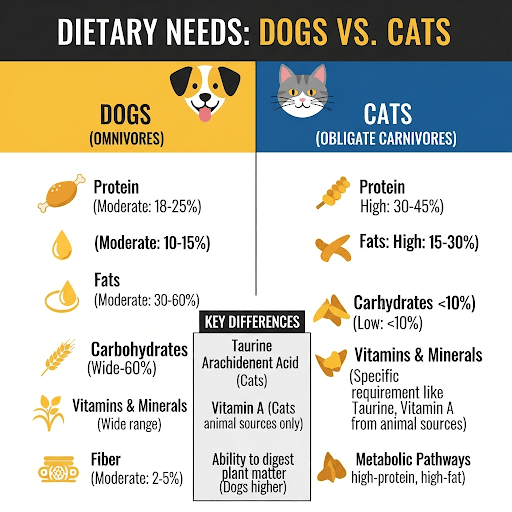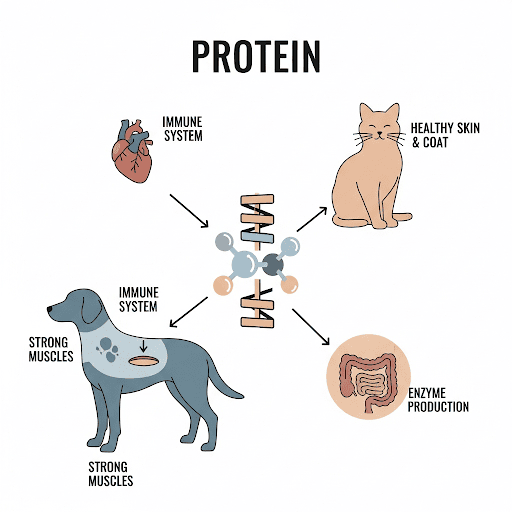The effortless joy of a pet in motion is a beautiful thing to witness. It’s the explosive leap for a thrown ball, the graceful hop onto a sunny windowsill, the happy dance they do when you walk through the door. This precious mobility defines their quality of life.
But over time, through the natural process of aging, vigorous activity, or genetic predisposition, the delicate cushion within their joints can begin to wear down, leading to stiffness, pain, and a reluctance to move.
Thankfully, veterinary nutrition offers powerful tools to help protect and support those hard-working joints. This article will explore the "joint-saving duo," glucosamine and chondroitin, explaining what they are, how they work, and how they can help keep your best friend moving comfortably for years to come.
A Look Inside the Joint: Cartilage, the Vital Cushion
Before we can understand the solution, we need to understand the joint itself. The ends of the bones within a joint (like the hip, knee, or elbow) are capped with a smooth, slippery, and resilient tissue called articular cartilage. This cartilage acts as a vital shock absorber, allowing the bones to glide over each other without friction. The entire joint is bathed in a thick, lubricating liquid called synovial fluid.
In a healthy pet, this system works perfectly. In a pet with osteoarthritis—the most common form of arthritis—the cartilage begins to break down. It becomes thinner, rougher, and loses its ability to cushion impact. This leads to inflammation, pain, stiffness, and the reduced mobility we associate with joint problems. Providing targeted joint support for dogs and cats is key to managing this condition.
How Glucosamine and Chondroitin Work as a Team
Glucosamine and chondroitin are natural substances known as nutraceuticals, which are food-derived components that provide health benefits. They are the cornerstones of joint support because they work together to protect the cartilage that’s left and help the body maintain what it can.
-
Glucosamine: The Cartilage Builder. Think of glucosamine as the essential building block for cartilage. It is a natural compound that the body uses to produce other molecules (called glycosaminoglycans) that are necessary to form and repair cartilage tissue. By providing an ample supply of glucosamine, you're giving the body the raw materials it needs for maintenance.
-
Chondroitin Sulfate: The Cartilage Protector. If glucosamine is the builder, chondroitin is the protector and hydrator. Its primary job is to help cartilage retain water, which is critical for its spongy, shock-absorbing properties. It also works by inhibiting certain destructive enzymes in the joint that actively break down cartilage.
They work best as a team. Glucosamine supplies the building blocks while chondroitin helps slow down the destruction and keeps the existing cartilage healthy and hydrated. This synergistic effect is why you almost always see glucosamine and chondroitin for pets offered together.
Proactive joint care is especially important for at-risk breeds and seniors. Our pet meal planner allows you to find recipes specifically fortified with therapeutic levels of glucosamine and chondroitin. It helps you seamlessly integrate this vital joint support into your pet's daily meals, making long-term care easy and effective.
Who Benefits and What to Look For
While any pet can develop joint issues, some groups benefit most from proactive or therapeutic support:
- Senior Pets: To help manage the symptoms of existing arthritis.
- Large and Giant Breeds: Proactively supporting their heavily-stressed joints from a young age can make a huge difference later in life.
- Breeds Prone to Joint Issues: German Shepherds, Labradors, Golden Retrievers, and Dachshunds are just a few examples.
- Highly Active & Sporting Dogs: To help protect their joints from the increased wear and tear of their activities.
- Cats: Don’t forget felines! Arthritis in cats is extremely common but often missed because they are masters at hiding pain. Signs might be as subtle as no longer jumping on the counter or hesitating at stairs. Glucosamine for cats is a vital part of senior feline care.
These ingredients can be found in therapeutic diets or given as a separate supplement. Always consult your veterinarian to determine the right approach and dosage for your pet, as quality and sourcing can vary greatly between products.
(Joint support is a key part of senior care. For a comprehensive look, read our article [Nutrition for Healthy Joints: A Proactive Approach].)

Conclusion: An Investment in Comfortable Movement
Glucosamine and chondroitin are not a cure for arthritis, but they are a powerful, scientifically-backed way to manage the condition and support long-term joint health. They work together to provide the body with the tools it needs to protect and maintain the precious cartilage that allows for comfortable, pain-free movement.
Supporting your pet's joints is a profound investment in their quality of life. It can help ensure their golden years are truly golden, filled with activity and comfort, not pain and stiffness.
If you've noticed your pet slowing down, or if they belong to an at-risk group, don't wait. Talk to your veterinarian about the benefits of glucosamine and chondroitin. Use our meal planner to find a diet that makes joint support a simple, daily habit for a happier, more mobile best friend.


